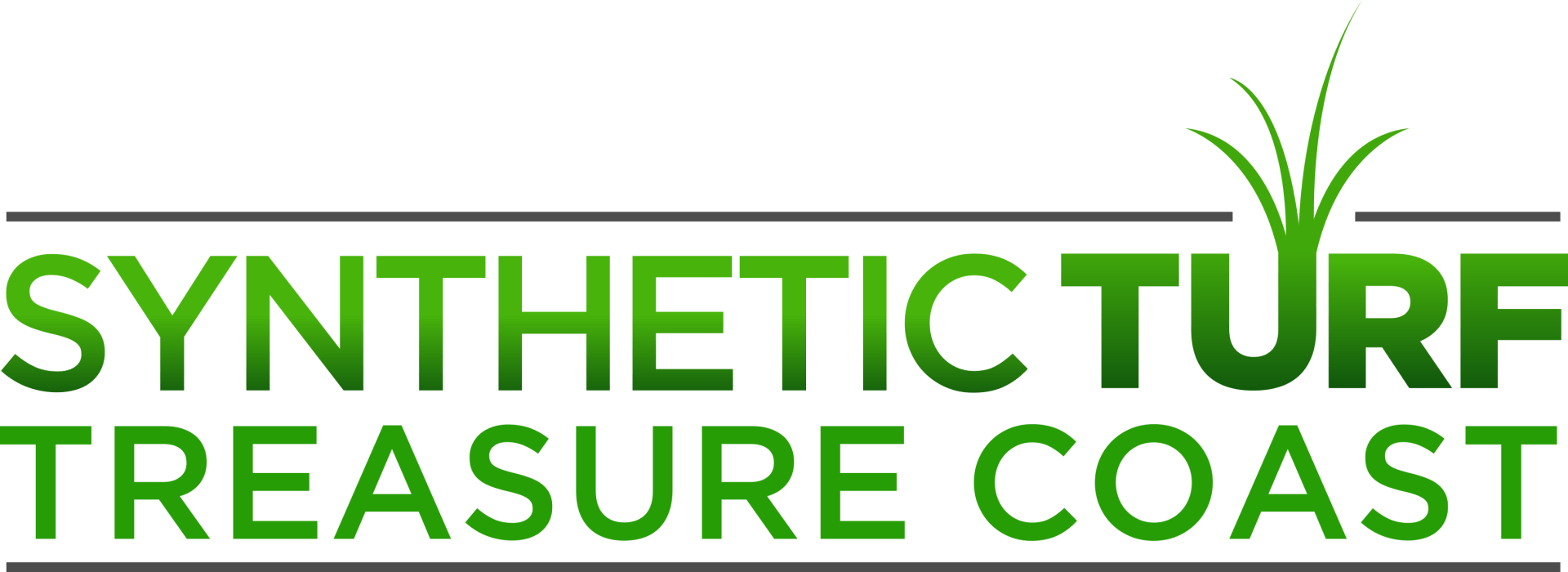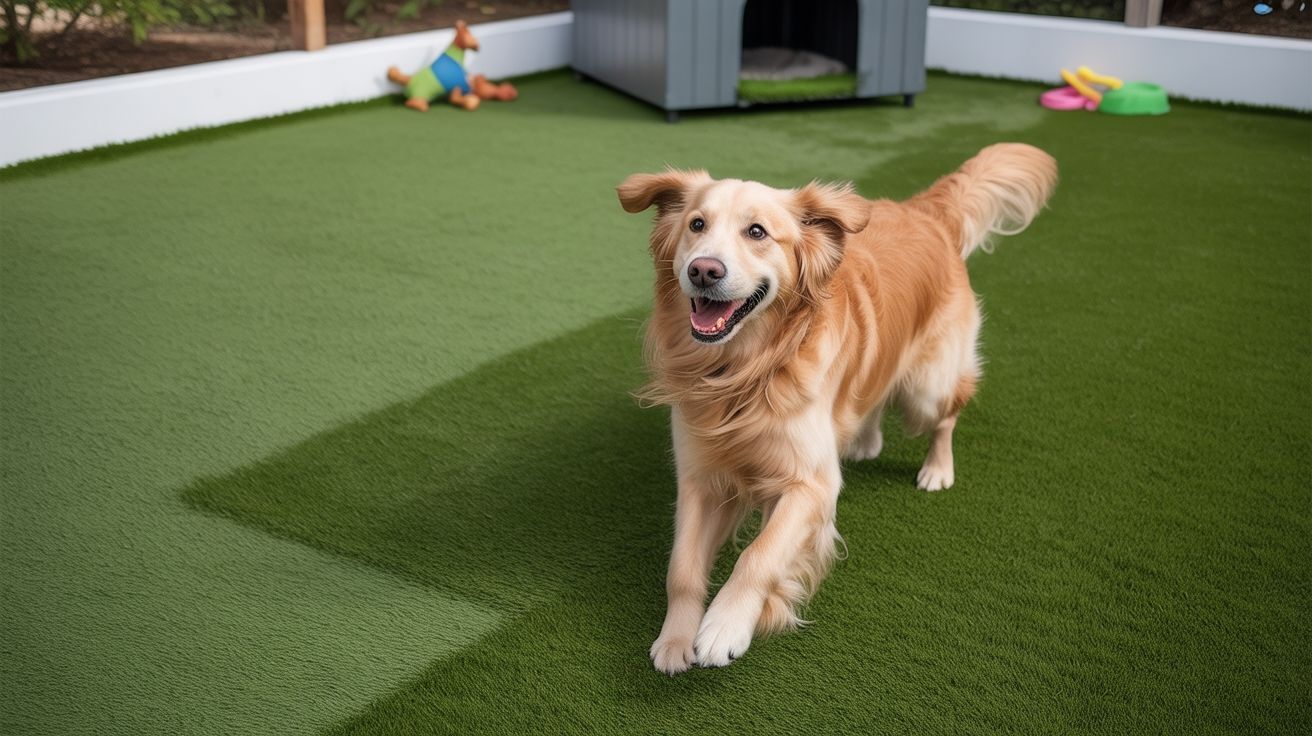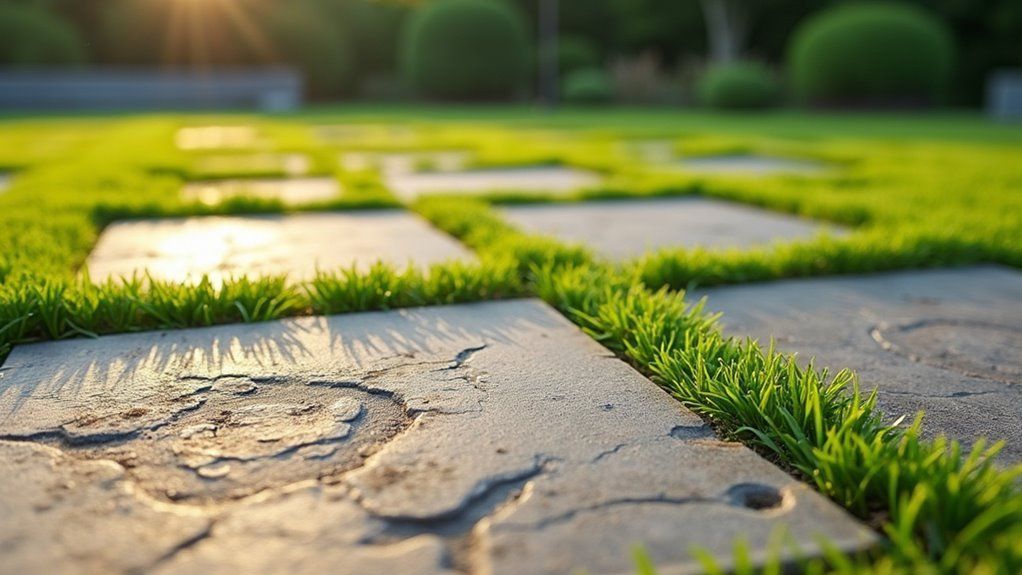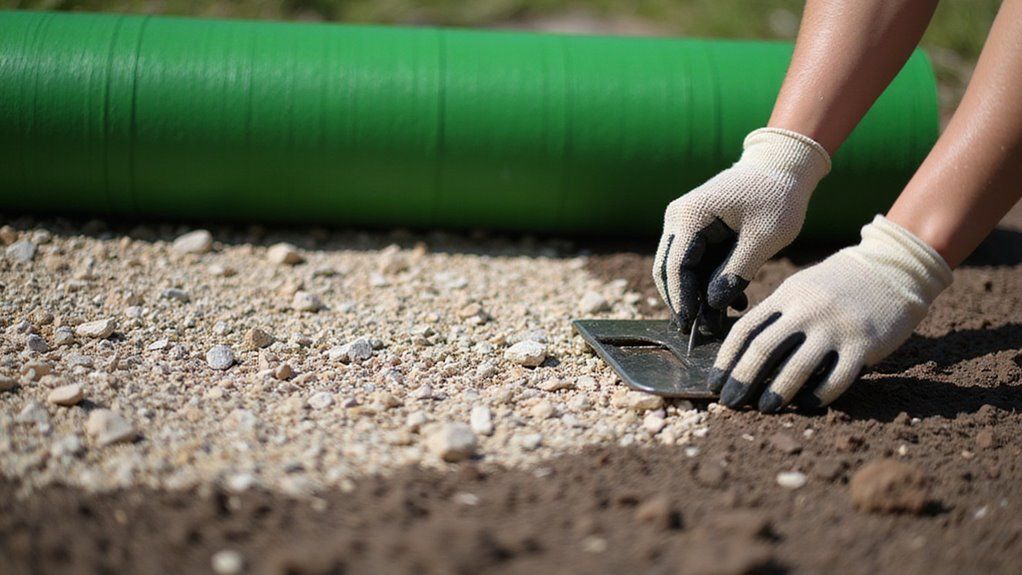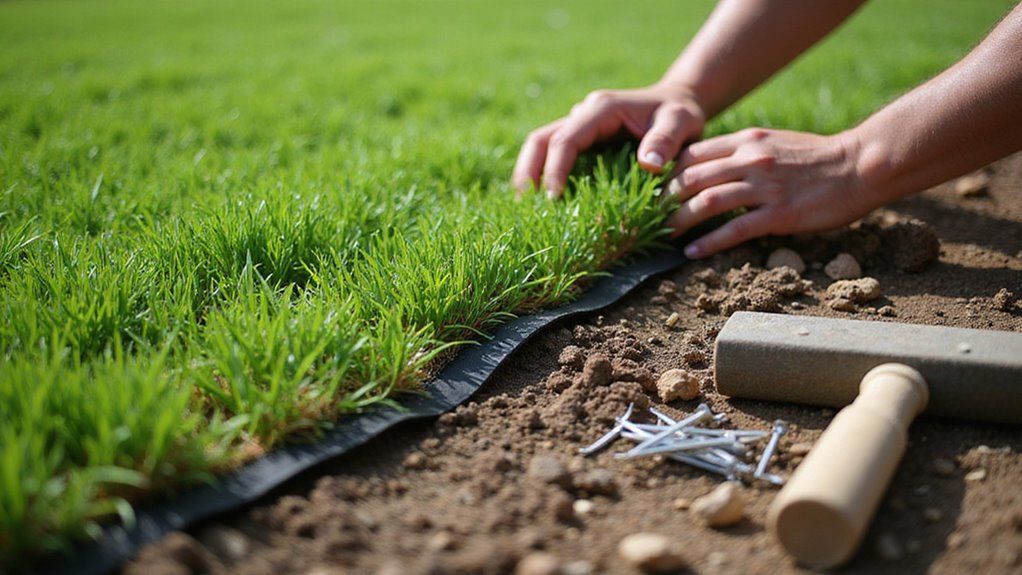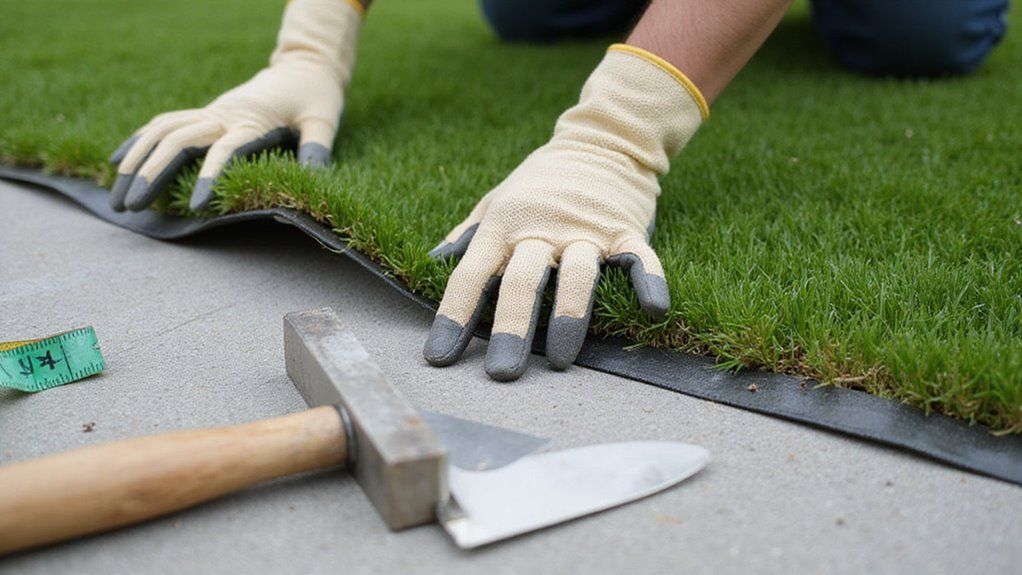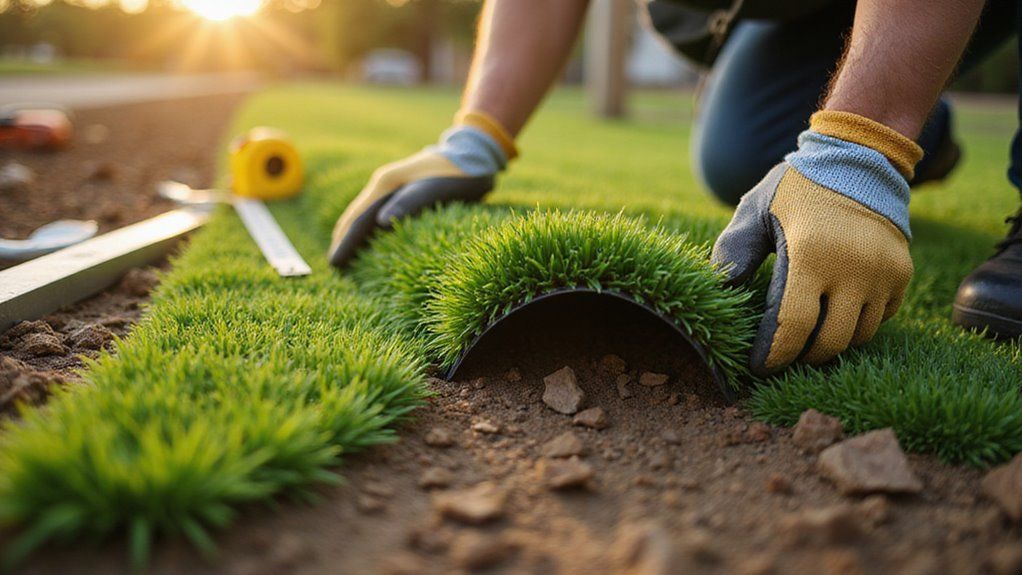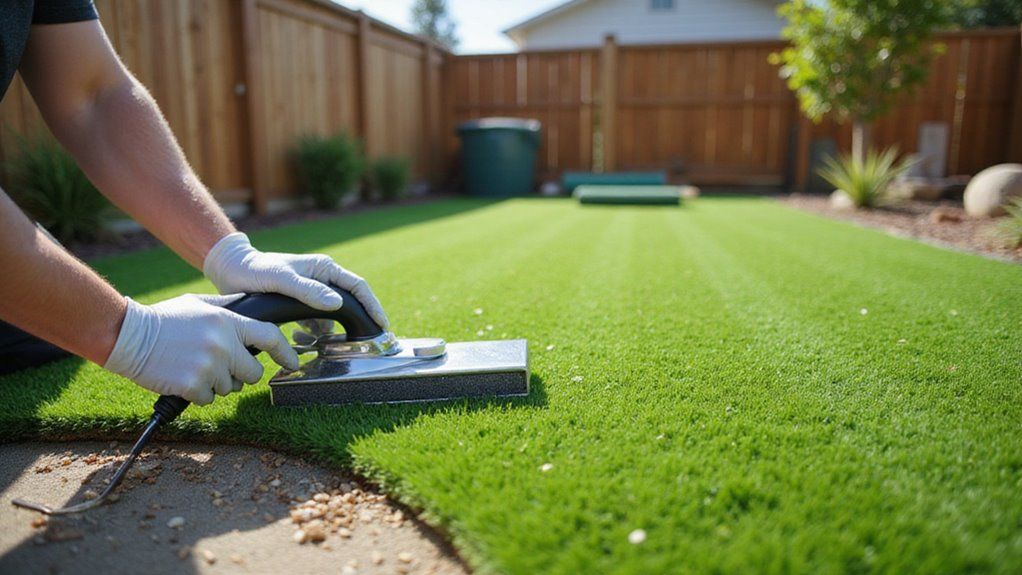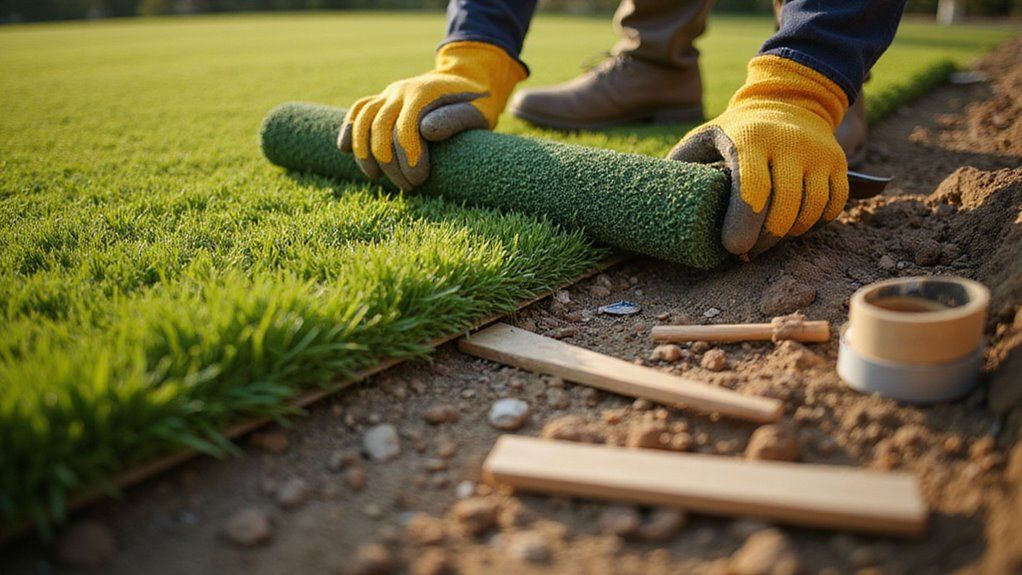Is Artificial Grass Good for Dogs
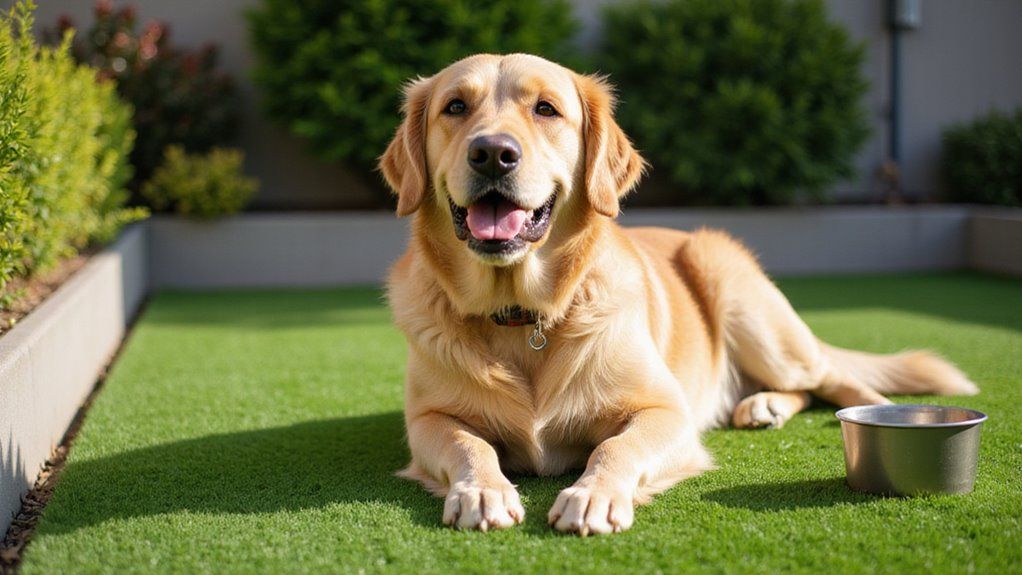
Dog owners face a common dilemma when choosing between natural and artificial grass for their yards. Muddy paws track dirt through the house after rain. Grass gets torn up from running and digging. Natural lawns need constant maintenance and repair from pet damage. These issues leave many pet parents frustrated and searching for better options.
The wrong yard solution can worsen problems rather than solve them. Some artificial grasses contain harmful chemicals. Heat retention in synthetic turf can burn sensitive paw pads on hot days. Drainage issues might create unpleasant odors if pet waste isn't properly managed.
Artificial grass can be good for dogs when you choose pet-friendly options designed specifically for canine companions. Quality synthetic turf offers excellent drainage, antimicrobial properties, and durability against playful paws. The best products provide safe surfaces without harmful chemicals while reducing maintenance needs dramatically.
This guide explores the pros and cons of artificial grass for your four-legged friends to help you make the best decision for your home.
Key Takeaways
- Artificial grass prevents mud, drains well, and eliminates brown spots caused by dog urine.
- Dogs may experience health issues like allergic reactions, skin irritation, or burns from hot turf surfaces.
- Most dogs adapt to synthetic turf within two weeks despite initial adjustment period.
- Regular maintenance includes waste removal, rinsing urine spots, and applying enzyme cleaners to control odors.
- Heat management is essential through cooling systems, shade structures, and monitoring surface temperatures during hot days.
The Pros of Artificial Grass for Dog Owners
Artificial grass offers many benefits for people with dogs. It stops mud from being tracked inside after rain. Dogs can enjoy this surface in any weather.
Synthetic turf drains well and helps manage pet urine problems. It prevents standing water that could grow bacteria. You won't see brown spots that dog urine usually causes on real grass.
Your pets will be safer without lawn chemicals on artificial grass. If you have dogs who play rough, the turf will hold up well. The surface stays nice-looking despite active pets.
Homeowners save time with fake grass because it needs less work. You don't have to mow, fertilize, or plant new seeds. Your yard will look good year-round with minimal effort.
The allergen reduction provides a healthier outdoor environment for dogs with sensitivities by eliminating pollen and mildew that commonly affect natural grass.
Potential Health Concerns for Canine Companions
Artificial grass may pose several risks to your dog's health over time. Some dogs can have allergic reactions to synthetic turf despite claims it's hypoallergenic. The materials can release harmful chemicals when temperatures rise.
Dogs with sensitive skin might develop irritation on paws and bellies after contact. Small cuts from rough fibers could get infected if not properly cleaned. Fake grass also gets much hotter than real grass, which might burn your pet's paws.
The filling materials in artificial turf contain metals that dogs might eat while playing. Some fillings have silica that dogs could breathe in when the surface is disturbed. If you use artificial grass, clean it often to stop bacteria growth in areas that stay wet. Proper maintenance includes regular inspections for wear and tear to prevent injuries when your dog plays on the surface.
How Dogs Interact With Synthetic Turf
Dogs behave differently on artificial turf than on natural grass. This affects their comfort and how active they are. Their adjustment to fake grass surfaces shapes their daily routines.
Turf quality affects paw grip during play. Better turf brands let dogs run safely without hurting their paws. Dogs can make quick turns without getting scratches.
Dogs avoid hot turf during summer days. They will seek shade or limit playtime when the surface heats up. If the turf gets too hot, your pet might refuse to walk on it.
The backing material stops dogs from digging. This frustrates their natural urge to dig holes. Your lawn stays intact even with playful pups.
Dogs will still mark territory on fake grass. This behavior continues despite the change in surface. Unlike natural grass, turf doesn't show damage from urine spots.
Most dogs adjust to synthetic turf within two weeks. They develop new play patterns and movement habits. If your dog seems confused at first, they will soon adapt to the new surface.
The anti-microbial coating helps prevent bacteria growth and odors from pet waste, making artificial grass a more hygienic option for your dogs.
Maintenance Requirements for Pet-Friendly Artificial Lawns
Pet-friendly artificial lawns need regular care to stay clean and functional. You should pick up solid waste right away. Rinsing urine spots with water helps stop ammonia buildup.
Clean your lawn deeply with enzyme cleaners made for fake grass. These cleaners break down smells instead of hiding them. Apply them once a month or whenever bad odors develop.
Brush the grass fibers against the grain every three months. This prevents matting caused by pets walking on the same paths. If you don't brush regularly, your lawn might look flat and unnatural.
Check the backing material twice a year for proper drainage. Water should flow through easily to prevent puddles and smell. Use a leaf blower to remove leaves and debris instead of metal rakes that could damage the fibers.
You might need to invest in professional services for deep cleaning if your yard experiences heavy pet traffic or develops stubborn odors that DIY methods can't eliminate.
Heat Issues: Keeping Your Dog Cool on Synthetic Grass
Synthetic grass gets much hotter than natural grass in direct sunlight. Your dog's paws can burn when turf temperatures rise 40-60°F higher than regular grass. You need cooling solutions to protect your pet.
Water is your best defense against hot turf. You can install irrigation systems under the grass for evaporative cooling. Spraying the area with water before your dog goes out helps lower temperatures quickly.
Special cooling infills can make artificial grass safer. These materials hold moisture and release it when temperatures climb. Shaded areas also provide relief for your dog during hot days.
Monitor the turf temperature by touching it with your hand. If it feels too hot for you, it's too hot for your dog's paws. You should create shade using trees, umbrellas, or shade sails over play areas.
Good air circulation helps reduce heat buildup. If your dog spends lots of time outdoors, consider ventilation systems under the turf. These systems allow air to flow beneath the grass backing.
Scheduling regular hydration breaks during outdoor playtime can prevent heat-related health issues for your dog on hot days.
Drainage Solutions for Pet Waste Management
Artificial grass installations require specialized drainage systems to manage your dog's liquid waste efficiently, preventing odor buildup and bacterial growth.
You'll need to implement regular solid waste removal protocols, including prompt pickup and periodic surface sanitization to maintain hygiene standards.
Incorporating antimicrobial infill materials, such as zeolite or silica-based products, can considerably augment waste neutralization capabilities while extending the functional lifespan of your synthetic turf investment. To maintain optimal performance, use eco-friendly cleaning detergent when conducting your monthly cleaning routine, increasing frequency to bi-weekly if pets regularly use the area.
Proper Liquid Waste Flow
Dogs need a way for their pee to drain through artificial grass. Good drainage stops bad smells and keeps the grass clean. These simple steps help waste flow correctly.
Put down 3-4 inches of crushed stone with a slight slope. This base helps urine move sideways instead of staying in one spot. The slope should be about ¼ inch per foot.
Choose turf backing that has 15-30 holes per square foot. More holes mean better drainage through the grass. Urine will pass through quickly if there are enough openings.
Add special infill that fights bacteria between the grass blades. This material helps break down urine compounds. Your yard will smell better if you use the right infill.
Connect the drainage system to your existing sewer lines if possible. This setup works best in areas with many dogs. The waste will flow away completely instead of soaking the ground.
These drainage steps protect your artificial grass from damage. The turf will last longer when pee doesn't sit on top. Dogs can play safely on a clean, dry surface.
Solid Waste Cleanup
Dog owners must clean solid waste quickly from artificial turf. Fecal matter won't break down on fake grass like it does on natural grass. Prompt removal prevents bacteria growth and bad smells.
Wait about 24 hours after turf installation before cleaning waste. Use tools with fine mesh screens to avoid damaging the turf. Plastic bags with rigid scoopers work well for waste collection.
Apply an enzyme cleaner made for synthetic surfaces after removing waste. This helps kill remaining bacteria. Deep cleaning with antimicrobial products keeps the area clean.
Check your yard regularly, especially where your dog goes most often. Regular inspections ensure you don't miss any waste. This maintains a clean and healthy environment for everyone.
Antimicrobial Infill Options
Several infill materials fight germs and reduce smells in pet turf areas. These materials work with drainage systems to manage pet waste effectively. Good infill choices keep your dog's grass area clean and odor-free.
Zeolite-based infills capture ammonia from dog urine. They release minerals that fight harmful bacteria. This natural option works well in busy pet areas.
Silica sand with germ-fighting treatment offers excellent drainage. It stops bacteria from growing on your turf. Your pets can play safely on this treated surface.
Acrylic-coated infills don't absorb water easily. Bacteria cannot grow when moisture doesn't collect. If you install this infill, odors will decrease significantly.
Cork-based options naturally fight microbes without chemicals. They provide a safe surface for pets with sensitive paws. Cork works well if you prefer eco-friendly solutions.
The right infill helps liquids drain away quickly from the turf surface. Faster drainage means less smell in your pet area. Choose infills designed specifically for areas where dogs play often.
Natural Instincts: Do Dogs Prefer Real Grass?
Dogs generally prefer real grass over artificial options. Their natural instincts draw them to the authentic feel, smell, and experience of natural grass. These preferences come from thousands of years of evolution.
Natural grass offers dogs many sensory benefits. They can smell different scents in real grass that artificial turf lacks. Dogs have over 300 million scent receptors that help them explore and enjoy natural environments.
Dogs show more natural behaviors on real grass. They like to sniff, dig, and mark territory on organic surfaces. If given a choice, most dogs will choose natural grass areas for play and exploration.
Artificial turf has practical benefits for dog owners. It stays clean and requires less maintenance than natural lawns. However, it cannot provide the full sensory experience dogs instinctively seek.
Understanding your dog's natural preferences can help with yard decisions. You might consider creating a small natural grass area if you use artificial turf.
This balance could satisfy both your practical needs and your dog's natural instincts.
Similar to Hobe Sound Beach, natural grass environments provide dogs with opportunities to connect with wildlife and diverse ecosystems.
Selecting Pet-Safe Artificial Turf Materials
Pet-safe materials are vital when installing artificial grass for dogs. These materials protect your pet's health while standing up to daily use. Good turf withstands scratching, digging, and waste.
Choose turf with antimicrobial infill to stop bacteria growth. This type of infill also helps control pet waste odors. Proper drainage is essential, so select products that drain at least 30 inches per hour.
Durable turf should have dense blades weighing at least 80 ounces per square yard. All components must have non-toxic certification. This includes both the backing materials and the infill.
The backing system affects how well waste drains through the turf. Premium backings have multiple layers with germ-fighting treatments. If you invest in quality backing, your turf will last longer under heavy dog traffic.
Many pet owners choose brands like Pet Zen Garden specifically designed with features that accommodate the unique needs of dogs while eliminating the need for pesticides and other harmful chemicals.
Installation Considerations for Dog-Friendly Yards
Proper installation ensures artificial turf works well for dogs. The most important part is setting up good drainage with layers of crushed stone and weed barriers. This prevents urine and rain from creating smells or bacteria.
You should secure the edges with custom borders to stop dogs from digging underneath. Shock-absorbing infill about 1-2 inches deep helps protect your dog's joints during play. Areas where dogs run often need deeper, more packed bases to prevent dips forming.
All seams must be firmly attached with special glue and extra backing. This keeps the turf strong when dogs run across it. Using a gravel base for your installation provides a more forgiving surface that reduces injury risk if your dog falls during play. If installed correctly, your artificial turf will last many years despite heavy dog use.
Addressing Odor Control in Synthetic Pet Areas
Pet waste management presents a significant challenge when installing artificial turf for dogs. You'll need to select antimicrobial infill materials specifically engineered to neutralize ammonia compounds and prevent bacterial proliferation in synthetic fibers.
Establishing a systematic cleaning protocol that includes regular hosing, spot treatment of affected areas, and periodic application of enzymatic cleaners will maintain optimal hygiene conditions and extend your turf's functional lifespan. For persistent odors, consider using natural cleaning solutions like water and vinegar mixtures that effectively remove oils and colors without harsh chemicals.
Antimicrobial Infill Options
Artificial grass areas for pets need special infill to fight bad smells. These infills work by stopping bacteria growth or absorbing urine odors. You can choose from natural or chemical options depending on your needs.
Zeolite infill traps ammonia from pet urine through ion exchange. This natural material works well in most weather conditions. It needs about 1-2 pounds per square foot for best results.
Silver-coated sand kills bacteria that cause smells. The silver protection lasts a long time even with regular use. This option works well in wet areas.
Walnut shell infill fights germs without added chemicals. It is environmentally friendly and biodegradable. Many pet owners prefer this natural alternative.
Treated silica sand combines good drainage with germ-fighting abilities. It remains effective in both hot and cold weather. The antimicrobial coating helps extend the life of your turf.
Regular cleaning with enzyme products helps any infill work better. Maintenance should happen at least once a month for heavy pet use. The right care will keep your artificial grass fresh for years.
Regular Cleaning Routine
A consistent cleaning schedule is the key to controlling pet odors in artificial turf. You need both daily care and deep cleaning to keep your turf fresh. This approach prevents waste buildup and maintains a clean yard.
Pick up solid waste right away. Rinse urine spots with water promptly. Weekly application of pet-friendly enzymatic cleaners will break down any remaining waste particles.
Deep clean your turf every three months with a turf-safe disinfectant. Apply the solution using a garden sprayer and rinse thoroughly afterward. If summer temperatures rise, clean more often since bacteria grow faster in heat.
You might consider hiring professionals once a year for specialized cleaning. They use equipment that reaches deep into the turf fibers. This professional service helps extend your turf's life and keeps it hygienic.
Durability: How Artificial Grass Stands Up to Active Dogs
Artificial grass for dogs is made from tough plastic fibers that can handle lots of activity. These special materials resist damage from running, playing, and digging. Your investment can last 10-15 years even with regular dog use.
Quality turf withstands constant running that would wear down natural grass. It also resists digging attempts when installed with proper backing and infill. The materials won't break down under harsh sunlight or extreme weather changes.
The best options have densely packed grass blades with over 18,000 stitches per square meter. This density prevents the grass from getting flattened by dog paws. Your yard will keep looking good throughout the turf's entire lifespan.
If you choose artificial grass, your dogs can play freely without damaging your lawn. The surface stays even and attractive despite heavy use. Natural grass would quickly develop bare spots and mud puddles in the same conditions.
Comparing Costs: Artificial vs. Natural Grass for Dog Owners
Artificial grass costs more upfront than natural grass for dog owners. Installation runs between $6-$20 per square foot for synthetic turf. Natural grass is cheaper initially, with seed costing $0.25-$0.40 per square foot and sod $0.80-$1.75.
Over time, artificial grass becomes more economical. Natural lawns require ongoing expenses for mowing equipment, fuel, fertilizers, and water. Dog damage to real grass often needs costly repairs and reseeding.
Synthetic turf maintenance is simpler and less expensive. Owners only need to rinse, brush, and occasionally disinfect the surface. Quality artificial grass typically lasts 10-15 years before needing replacement.
The long-term savings can offset the higher initial investment. If you plan to stay in your home for several years, artificial grass might be worth considering. Dog owners should weigh both immediate costs and future expenses when making their decision.
Environmental Impact of Synthetic Turf for Pets
You'll need to evaluate the powerful toxin exposure your dog faces from artificial grass components, including chemicals like lead, phthalates, and PFAS that may leach into soil over time.
Waste management becomes more complex with synthetic turf, as urine doesn't naturally filter through soil systems, requiring more frequent cleaning and specialized deodorizers to prevent bacterial buildup. Artificial grass surfaces can reach temperatures up to 40-60°F hotter than natural grass on sunny days, potentially causing discomfort or even paw burns for your canine companion.
Toxin Risks Assessment
Artificial grass may contain harmful chemicals that could affect your pet's health. Dogs absorb these toxins through their paws when walking on the grass. The risks are higher with new turf installations.
Older turf materials often contain lead and zinc compounds. Hot days can release harmful VOCs from the artificial grass. The petroleum-based fibers might irritate your dog's skin.
Some artificial grass has antimicrobial treatments that harm your dog's natural bacteria. Small dogs face greater risks because of their size compared to toxin exposure. If your dog spends time on artificial grass, they might develop health problems over time.
Long-term exposure rarely causes immediate illness. Instead, it might lead to hormone problems or more allergies. You should consider these risks when choosing surfaces for your pet's play area.
Waste Management Challenges
Artificial grass creates special cleanup problems for pet owners. Owners must pick up solid waste right away to keep the surface clean. Urine needs quick rinsing to stop smells from forming.
Pet waste needs special storage beyond regular trash methods. Sealed containers with carbon filters work well for controlling odors. Enzyme cleaners made for fake grass are necessary because normal cleaners might damage the material.
You should deep clean your turf every two weeks with germ-killing products. This prevents harmful buildup under the surface. If you don't maintain artificial grass properly, it can collect germs and become unhealthy.
Heat Retention Problems
Artificial turf gets too hot for dogs to walk on safely. It can reach temperatures of 165°F (74°C) on sunny days. This is much hotter than natural grass.
Synthetic grass cannot cool itself like real grass does. Dogs' paw pads can burn when they walk on these hot surfaces. The heat stays in the turf even after the sun goes down.
The material reflects heat upward where dogs feel it most. If your dog plays on artificial turf, you should check the temperature first. You might need to restrict access during hot parts of the day.
Shade structures and cooling systems can help reduce heat risks. Without these safeguards, dogs may suffer burns or overheating. Your pet's safety depends on managing these temperature issues effectively.
Creating a Balanced Yard: Combining Artificial and Natural Elements
You can blend artificial turf with natural elements for a perfect dog-friendly yard. This mix preserves your yard's beauty while giving your dog space to play. The combined approach works better than choosing just one option.
Artificial grass works well in busy play areas where dogs run often. Natural garden beds can sit next to synthetic turf sections for a pleasing look. This arrangement uses the best features of both materials.
Place fake grass in shady spots where real grass doesn't grow well. Real grass can still thrive in sunny areas of your yard. Stone paths between these different zones add texture and reduce wear patterns.
Dogs will enjoy variety in their outdoor space. The mixed approach helps solve heat problems by limiting artificial turf use. Your dog will still have clean areas to play when the weather turns rainy or muddy.
Conclusion
Artificial grass provides a practical solution for dog owners seeking a low-maintenance yard. Modern synthetic turf offers antimicrobial protection and excellent drainage capabilities that natural grass cannot match. When properly installed, it creates a durable, safe environment for your pets to enjoy year-round.
Heat management becomes essential during summer months, as artificial turf can become hot under direct sunlight. Regular cleaning helps remove pet waste and prevents odor buildup. If you implement proper care routines, artificial grass can remain in excellent condition despite heavy use by active dogs.
The benefits of artificial turf for dog owners typically outweigh the drawbacks when considering long-term maintenance. Your pets will enjoy a mud-free, tick-free outdoor space that stays green regardless of weather conditions. Install your artificial grass with Synthetic Turf Treasure Coast for professional results that both you and your dogs will appreciate.
About the author
Kathy Leavell
Kathy Leavell is the founder and owner of Synthetic Turf Treasure Coast, a leading provider of synthetic grass solutions for residential and commercial properties in Florida. With over a decade of experience in the industry, Kathy has become a recognized expert in synthetic turf installation, maintenance, and repair. Under her leadership, Synthetic Turf Treasure Coast has earned a reputation for exceptional customer service and high-quality workmanship.
Prior to starting her own business, Kathy worked in sales and marketing roles at several major synthetic turf manufacturers.
